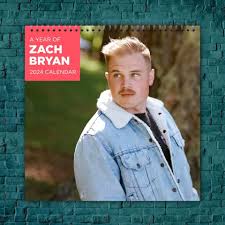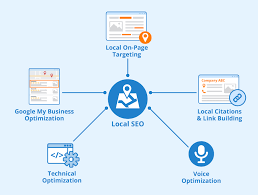Running social networks without a plan is like making a website without a technical task: the result will be unpredictable. We tell you how to create a content plan correctly and where to look for ideas for posts.
What is a content plan?
Why do you need a content plan?
What types of content plans are there?
What types of content are there?
Where to get ideas for content
How to Create a Content Plan for Social Media
Content plan for a website: what is special about it
How to Make a Proper Content Plan That Will Work
Expert advice
Read Also:All the moves are recorded: what web analysts do
What is a content plan?
Table of Contents
A content plan is a schedule of publications on various platforms, which is drawn up for a certain period: a month, six months, or a year.
A content plan for social media includes all platforms used – for example, YouTube, VK and Telegram – as well as post topics and formats.
For each platform, a plan is made separately, taking into account its technical features, formats and audience. For example, Telegram allows publishing posts up to 1024 characters long with spaces, using emoji and polls. The plan may contain an exact publication schedule or only a set of topics, formats and goals of posts.
Why do you need a content plan?
Each company may have different reasons for creating a content plan, but there are some universal tasks:
● Helps achieve results
A content plan makes it easier to set goals and track the effectiveness of different formats and topics to achieve KPIs.
● Creates structure
Instead of chaotic posts on social networks, there will be regular, interesting publications that meet business goals, attract new subscribers and are useful for readers.
For example, posts about cozy blankets and warming drinks will not be relevant until September, but people start to be interested in prom dresses as early as April.
● Simplifies work with contractors
Creating a content plan simplifies work with contractors who create content for social networks. Especially where there are many contractors and not all of them work on staff: SMM managers, copywriters , designers, experts. In this case, a content plan helps keep the team informed about what posts are in the works and not miss the release of a new product.
● Saves time
When you have a ready-made plan, you don’t need to think about topics for posts every time and check old ones to avoid repetition. It’s especially helpful when there is no news or popular trends and you need to come up with an informational reason yourself.
● Improves the quality of content
If you plan your posts in advance, you will have enough time to write a good text, order an illustration from a designer, or even shoot a video. Such posts will get more coverage than those made “on the knee” in 5 minutes.
What types of content plans are there?
By difficulty level:
● The simplest
is when only topics and headings are indicated. For example: “Useful tips” or “New product”.
● More complex
when formats are added to them. For example, “video”, “photo carousel” or “contest”.
● The most difficult
is when marketing parameters are additionally taken into account: target audience, popular trends, post goals. For example, posts for young mothers are usually as friendly as possible, and for teenagers and young people, they contain popular memes or challenges.
By planning horizon:
● Short-term
up to 1 month. Suitable for media and other businesses where new news items regularly appear that cannot be planned in advance. Short-term plans work when the company has a short approval chain and decisions on content release are made quickly.
● Long-term
3–6 months. Suitable for large businesses, where little changes during the year and news occurs rarely. Developing a long-term content plan is also relevant for companies that make original videos and other content that is difficult to produce. Because it takes much more time to produce, and many people are involved in the process.
By presentation form:
● Calendar
The most popular type, which is usually designed as a table in Google Sheets. It distributes posts by dates and days of the week, indicating topics, categories and formats.
● Rubricator
This is a simplified content plan – posts are distributed only by topics or categories and a title is indicated. It can also be created in Google Sheets or task managers: for example, in Trello or Notion.
● Mindmap
The most creative approach to writing a content plan. Content is first broken down by type, then by topic and category. The result is a tree. Each post has visible goals and a thematic area from which ideas can be taken.
What types of content are there?
Before creating a content plan, it is important to decide on the topics and formats of the content. To do this, you need to understand the goals of the business, study the trends of the sites and the target audience . And then decide on the content formats.
Depending on the purpose, content can be:
● Useful
Solves readers’ problems. For example, a review of furniture stores with an explanation of which sofa is best to buy for a family with a small child and a dog.
● Educational
A type of useful content that contains clear instructions. For example, a post on “How to remove a juice stain from velour upholstery in three minutes.” It’s even better if the text is accompanied by visual illustrations or videos.
● Selling
Its goal is to tell about a product or service and encourage a purchase. Selling posts also include posts about promotions and discounts. For example: “Only until the end of the month, when buying a sofa from 50 thousand rubles – a bench as a gift!” In such posts, it is important to clearly describe the benefit for the client and explain what to do. For example, click on a link, fill out a form or leave a request.
● Reputational
Helps create a favorable impression of a brand or company. For example: “Today we received a prize for the best design of a sofa collection at an international exhibition. Companies from 30 countries participated in it.”
If a company has a lot of subscribers and works directly with customers, it should be prepared for negativity. A customer may write in the comments that they received a damaged product and there was no response to the call. Or even worse, a popular blogger wrote about their negative experience, and the post went viral.
In this case, a post in which the company speaks out, apologizes to customers, and explains how it fixed the situation could save the situation.
● Engaging
This type of content helps attract new subscribers and motivate existing ones to take action. These are contests, surveys, quizzes, or requests to share their stories. For example, a furniture manufacturer invites subscribers to tell a funny story related to a sofa. Ideally, the post hits the audience so hard that people want to share it on their feed.
● Entertainment
Anything that doesn’t fall into any of the categories and has no practical purpose. Such posts help to add some positivity to the feed, collect likes and increase subscriber loyalty. These can be interesting facts, memes, funny quotes and videos. It’s better if such posts at least indirectly relate to the brand or company.
Posts come in different formats:
● Text
Depending on the platform, audience and objectives, these could be longreads of 5,000 characters, short engaging posts of 500 or posters of 50.
● Picture or gallery
Real photos, drawn scenes or infographics. As a rule, a post with a picture gets more attention and social networks show them to a larger number of users. Therefore, text posts – especially those longer than 3-4 paragraphs – are best supplemented with an image.
● Video
Full-length videos with interviews or reports, short promo videos or presentations, videos for 3-minute clips. Looping videos, GIFs.
Where to get ideas for content
Ideas for posts can be found in several sources:
● Ask subscribers.
If the company already has social networks, conduct a survey there. If they are just planning to do so, conduct a survey among clients through any online channels.
● Study trends
hashtags, and recommendations. Many platforms are designed to show the most popular posts or videos in the feed more often. You can take ideas from popular YouTube videos or Google Trends queries, including those that gain popularity every year at a certain time.
● Find out from colleagues
First of all, from those involved in marketing and sales. You can find out from them about the launch of new products, promotions, and what people buy most often. If you involve HR specialists, you can add birthdays of key employees to the plan, for example, the founders of the company or its ambassadors who are active on social networks.
● Take a peek at your competitors
It’s best to base your efforts on the social networks of companies and brands in the same industry, with a large number of subscribers and a variety of formats.
● Check the calendar of newsworthy events
It will help you plan posts for holidays that relate to your company or brand. Calendars are usually created by marketing agencies and posted in the public domain .
Read Also:The Cure for Fear: What Are Clients’ Pains and Why Study Them?
How to Create a Content Plan for Social Media
The exact set and sequence of actions depend on the company, formats and platforms, as well as the tasks that the business solves in social networks.
On average, the step-by-step creation of a content plan looks like this:
1. Collect input.
Find out the goals and objectives of the business, collect references on the content, decide on the platforms.
The goals of the content plan, formats and types of posts will depend on the answers to the questions:
1.● Why do companies need social networks?
2.● Which sites are best suited?
3.● Is it possible to solve the same problems by purchasing traffic and targeted advertising?
2. Assess resources.
Make sure that there is a budget and a team to implement the content plan, as well as regular sources of content. These could be, for example, company employees. If you plan to involve external experts, you need to establish contact with them immediately.
3. Identify “anchor points.”
These could be product releases, branch openings, or other events in the life of the company that definitely need to be talked about on social media.
4. Collect ideas for posts.
This can be anything that meets the company’s objectives and is interesting to the target audience. Ideas for posts are taken from thematic sources, calendars of news events, surveys of colleagues in the industry, and sometimes they are spied on by competitors.
5. Distribute by topics and headings.
They can be permanent or temporary, for a specific season or internal news item.
6. Agree with the manager.
In large companies, the content plan is usually agreed upon by several people, in small ones the decision is often made by the specialist who develops the plan.
7. Assign tasks.
Decide who will write posts, select textures, design illustrations, shoot videos, and promote publications. The exact set of tasks depends on the size of the team that handles social networks, as well as the number of platforms and content formats.
Content plan for a website: what is special about it
A content plan for a website is needed in three cases:
1.● The site has a personal or corporate blog.
2.● This is an online media site.
3.● The site contains landing pages that are related to specific products, events or activities.
It differs from a content plan for social networks in that the site usually adheres to a single format for all posts, and instead of trends from different platforms, it relies on search engine optimization requirements.
SEO specialists give recommendations on topics, headings, volume and keywords that should be used in texts. They depend on the business area, competitive environment and technical capabilities of the site itself. Based on the list of keywords, they create the semantic core of the site : a set of words and phrases that are divided into topics.
In online media, the content plan is based more on the subject of the publication, the site’s headings and news items, which change every day.
How to Make a Proper Content Plan That Will Work
● Distribute important content evenly
For example, a company has ordered several videos with a brand ambassador. A series of posts with these videos are planned for the next 1-3 months, so that they are released at a certain frequency. If you post all the videos at once, the audience will quickly get tired of them and will watch one or two at best.
● Allow 10–20% for uncertainty
About once a week or month, events occur that are not yet known, but are very important for the brand or business. For example, gasoline prices have risen sharply, and the delivery service needs to explain to customers why it is raising prices. Then you need to leave space for them so that you don’t have to move this content.
● Plan at least a month in advance
For small businesses or media, such a horizon is quite sufficient, even if events change very quickly. It is definitely not worth planning for a shorter period: otherwise, it will be difficult to distribute all the necessary formats, topics and headings, as well as to manage to prepare texts and images on time. For beginners, a monthly plan will help to test topics and formats, track errors and take them into account in the long-term version.
● Don’t overload with details
If the content plan already has 18 columns, and its development takes more than 30% of the working time, it’s time to stop. The plan only sets the focus and direction, and you can fill it and adjust it in the process.
● Be consistent and logical
If a blogger writes a lot about time management and collects positive feedback from subscribers, then it would be logical to later offer an online course or webinar on this topic.
● Set realistic deadlines
If a post requires filming a video or integration, you need to set aside extra time for that. Something can always fall through or get rescheduled, so you need to prepare a backup post to replace it.
● React quickly to trends
Sometimes it is better to move a planned post if a new trend or news item has started to gain traction on social media that subscribers will definitely like. For example, for the social media of an online language school, such a reason would be a new popular song in English that can be translated and idioms analyzed.
● Analyze the results
This should be done regularly to understand which topics and formats are the most popular and where engagement is the lowest. Use successful formats more often or even cross-breed them. For example, a video tutorial on how to properly clean a dishwasher filter and a survey of subscribers: did they know that if you don’t do this regularly, the dishes will be dirty even after washing?











